
|   |

|   |
Astad Deboo’s enthralling lec-dem / workshop for Arpan Text & pics: Lalitha Venkat e-mail: lalvenkat@yahoo.com June 9, 2012 On the evening of June 6, 2012, Arpan presented a lec – dem / workshop by Astad Deboo, pioneer of Contemporary Dance in India, as part of Arpan's Anukathana Series, at the Arpan Studio in Redmond, WA. Earlier in the week, Astad had performed in the Seattle International Dance Festival. Astad spoke first about his journey in dance, how he had been lucky to have the support of his parents in his choice of career. They had no objection to his leaving for foreign shores on board a cargo ship equipped with only a backpack. In Europe, he came under the influence of Pina Bausch and though he had formal training in Kathak and Kathakali, he evolved his own dance vocabulary over time, integrating hasta mudras and some elements of his classical dance training. A performing artiste for more than 40 years, his work is rather minimalistic now but rasas still come through as he demonstrated through a presentation of bhakti rasa in ‘Aahavan.’ 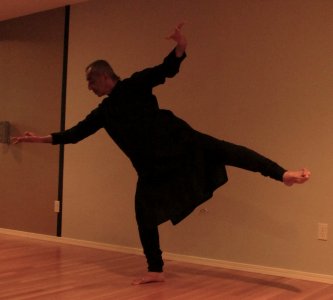  Astad said that it had been an uphill task for him then to get presenters to support his contemporary dance style, but now there are so many artistes performing contemporary dance to much acclaim. A majority of these dancers have a foundation in classical dance training. “Music plays an integral part in my works. Many a time, music is the kick off point for my choreography. Dance space is very important for me. I dance not only on the proscenium, but also in museums, plazas, water bodies and so on. I improvise in each space. It is through experience that you can make a space come alive through movement, and make that space a part of your performance.” Adapting to the available space, Astad performed ‘Stepping out’ which was originally done on 3 ladders each 30’ high! It was a pleasure to see the movements of his eyebrows (Kathakali training), the occasional slight smile on his face and the twirls as in Kathak. Needless to say, the audience was fascinated to witness such artistry at close quarters! Stressing on the importance of light design for his works, Astad gave a brief account of his varied collaborations – with Drupad maestros the Gundecha Brothers, master puppeteer Dadi Pudumjee, the tang-ta artistes of Manipur whose movements fascinate him. His work with the deaf started with the mime artistes of Deaf Players of Kolkata that lasted for 14 years, then the girls of the Clarke School for the Deaf in Chennai with whose Bharatanatyam trained dancers, he presented ‘Contraposition’ based on the rasas, a record 75 times all over the world. To get the hearing impaired to dance in coordination, Astad devised the system of counting patterns. “There’s no room for pity. I am a perfectionist and a task master,” said Astad with a smile, much to everyone’s awe. His current work is with the street children of the Salaam Balak Trust in Delhi. When they came under Astad’s wing, they knew only Bollywood dance. But they have successfully performed ‘Breaking Boundaries’ (one would never guess that none of them are trained formally in dance!) and the latest production scheduled to tour is ‘Interpreting Tagore’ in which 8 performers of Salaam Balak Trust are part of the Astad Deboo Dance Company. 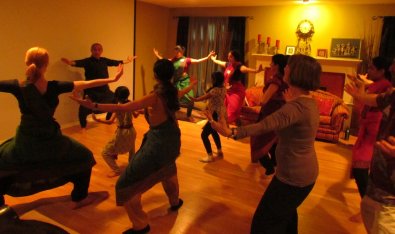 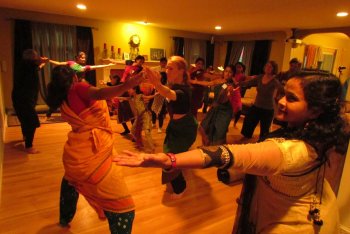 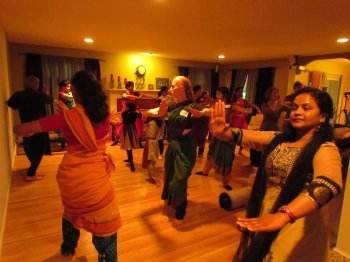 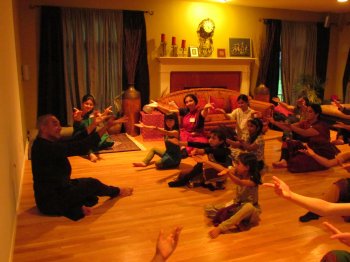 After this brief introduction, it was time for the Q and A session. How does he get the music for his productions? “I listen to a lot of music and I have been fortunate to work in Europe with musicians.” Does he have a particular teaching method? “I don’t really teach. I mentor. I work with the end result being a production. I work with modern trained dancers, deaf dancers, martial artistes and so on. Once I know what I have to work with, I train them for 6 to 18 months in my dance vocabulary and then work on the production.” How does he choreograph? “As a choreographer, I need to have a vision, whether it is to be a solo, duet or a group composition.” Do his productions have a story or do they just comprise artistically choreographed movement sequences? “My productions do have story interwoven in the choreography. After working with Pina Bausch, I did ‘Mangalore Street’ based on a character called Joglekar.” Astad narrated the story line combined with mime, and even the youngest participants could follow the delightful theatrics. After this entertaining session, it was time for the much awaited dance hour. The 21 rapt participants had to mirror Astad’s moves to soothing music and it was endearing to see the 4 young participants bravely keep pace with the grown-ups. A majority of the participants felt the movement session had a meditative quality to it and wanted more of it. “It was so meditative and an hour each day of such beautiful movements to such beautiful music is what one needs to get rid of the stress buildup of the day!” 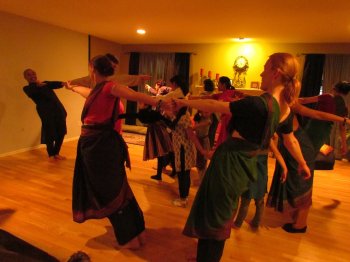 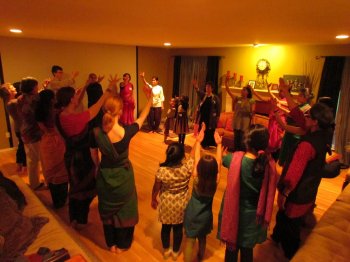 For Astad, the workshop had been a great opportunity to interact with Indians who are dance practitioners outside India. Joyce Paul Poursabahian, the Artistic Director of Arpan, who is a performer / teacher of the Kalakshetra style, believes strongly that dance students born and brought up in the US as well as upcoming dancers should know how established dancers have evolved in their career and that is one reason why artistes are specially invited to speak about their artistic journey. “It is also important to be exposed to other dance styles apart from Bharatanatyam. All these will help in making one a complete dancer.” Lalitha Venkat is the content editor of narthaki.com |